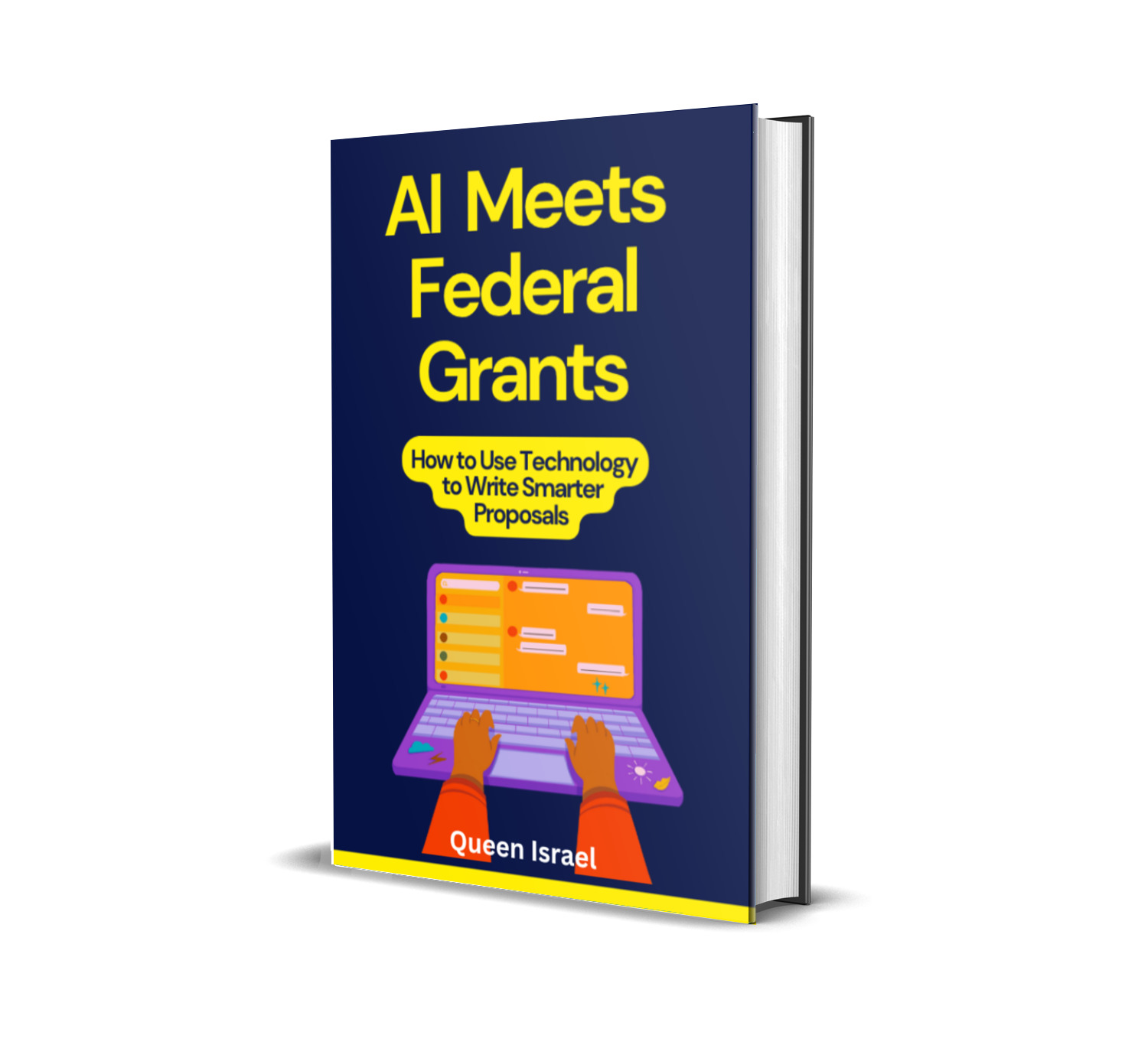Block grants are a unique and powerful fiscal tool that the federal government leverages to disburse funding to state and local governments. These funds are typically meant for broad purposes, such as social services or community development, but with a notable feature: they offer recipients a high degree of flexibility in how the funds are used. Let’s delve deeper into their definition and trace back their origins.
1.What Are Block Grants?
At its core, a block grant is a lump sum of money granted by the national government to lower-level entities, often state or municipal bodies. Unlike categorical grants, which mandate specific uses and have tight regulations, block grants are more versatile. They come with general guidelines rather than exhaustive, detailed stipulations. This flexibility makes block grants highly desirable, as they allow local entities to tailor their spending according to local needs and conditions.
a) Historical Underpinnings
The inception of block grants can be traced back to the 20th century. As the U.S. federal system evolved, the complexity of government programs grew, leading to inefficiencies. Many state and local authorities felt constrained by the categorical grants that were laden with federal conditions and strings attached. They yearned for a more streamlined system that would allow them to utilize federal funds without the heavy hand of stringent federal oversight.
It was during President Richard Nixon’s tenure in the 1970s that the concept of block grants came to the forefront. Nixon proposed consolidating the numerous categorical grants into multipurpose block grants. The rationale was twofold: to reduce bureaucratic red tape and to empower state and local agencies by granting them more autonomy.
The New Federalism era of the 1980s, championed by President Ronald Reagan, further propelled the shift towards block grants. It was a period characterized by the quest to restore power balance, aiming to transfer certain responsibilities from the federal level to states. Block grants were viewed as an ideal instrument to achieve this decentralization, supporting the belief in local governance knowing best about its citizen’s needs.
b)Modern-Day Relevance
Today, block grants have become a mainstay in the landscape of federal financial assistance. They support a vast array of programs, from housing and health to education and community services. The Community Development Block Grant (CDBG), for instance, is a notable program established in 1974. It was designed to furnish cities and counties with resources to address housing, especially for low and moderate-income citizens. Similarly, the Temporary Assistance for Needy Families (TANF) block grant provides states with the freedom to devise and implement their strategies to aid families in need.
c) Contemporary Challenges
While block grants are lauded for their flexibility, they’re not without contention. Critics argue that this flexibility might lead to a lack of standardization and potentially misappropriated funds. With reduced federal oversight, there’s also the concern that states might use the funds for projects that don’t necessarily align with the original intent of the grant. However, proponents counter these arguments by emphasizing the efficiency and localized understanding that comes with this decentralized approach.
2. Allocation and Distribution of Block Grants
The allocation and distribution of block grants are pivotal components of the federal funding process, offering states and local governments the fiscal capacity to address varying needs within their jurisdictions. The mechanism through which these grants are allocated and distributed is layered and multifaceted, largely influenced by specific determining factors and recipient entities.
a) Determining Factors
Understanding the nuances of block grant allocation requires an insight into the key determining factors that dictate how these funds are earmarked. These factors are instrumental in ensuring that funds are allocated equitably, addressing the diverse needs and conditions of different regions. One critical factor is population. Regions with higher populations generally receive larger allocations to cater to the expansive needs of a broader demographic.
Equally significant is the economic condition of the prospective recipient entities. Areas characterized by lower income levels or higher unemployment rates typically are prioritized, aiming to stimulate economic development and address pressing needs in underprivileged communities. The presence of specific problems or needs, such as high crime rates or deteriorating infrastructure, also plays a substantial role in influencing allocations. These dynamic factors interweave to form a complex tapestry that dictates the allocation of block grants, striving to mirror the multifarious needs and circumstances of different regions.
b) Recipient Entities
Once the allocations are deciphered, identifying the recipient entities is the next cog in the wheel. Block grants are primarily directed towards state and local governments. These include municipalities, counties, and townships, each uniquely positioned to understand and respond to the localized needs of their communities. The autonomy afforded to these entities enables them to tailor their strategies, prioritizing initiatives that align with the overarching goals and values of their constituencies.
Additionally, non-profit organizations and educational institutions are also frequent recipients. These entities are integral in addressing specific community needs, such as social services, healthcare, and education. The spectrum of recipient entities is diverse, each contributing to the fabric of community development and well-being from a distinct vantage point, fostering an environment that is conducive to holistic growth and sustainability.
c) Distribution Mechanism
The process through which block grants are distributed is meticulous, ensuring the equitable dispersion of funds. Typically, the federal government employs a formula-based approach to distribute funds, relying on statistical indicators such as population, poverty level, and unemployment rate. This approach mitigates subjectivity, fostering a transparent and equitable distribution mechanism.
Once the funds are allocated, recipient entities must often submit detailed plans outlining the intended use of the funds. These plans undergo rigorous scrutiny to ensure compliance with federal guidelines and objectives. The approval process is stringent, ensuring the alignment of proposed projects with the overarching goals of the block grants.
Subsequently, the release of funds is usually incremental, tied to the achievement of predetermined milestones. Monitoring and reporting are paramount throughout the implementation phase. Recipients are mandated to submit periodic reports, elucidating the progress and impact of the funded projects. This iterative feedback loop is integral in maintaining accountability, ensuring that funds are utilized efficiently and ethically, and recalibrating strategies in response to evolving needs and circumstances.
d) Impact on Communities
The culmination of this intricate process is the materialization of impactful projects within communities. Block grants empower local entities to address pressing issues such as housing shortages, educational disparities, and healthcare access. The amalgamation of determining factors, recipient entities, and distribution mechanisms converge to create a robust framework that drives community development and resilience.
The decentralized nature of block grants fosters innovation and adaptability, enabling local entities to develop and implement solutions that are congruent with their unique contexts. This localization of strategies augments the relevance and efficacy of interventions, contributing to the attainment of sustainable and inclusive development goals.
3. Usage and Limitations of Block Grants
The infusion of block grants into various sectors has materialized as a significant lifeline, especially for regions striving to meet a plethora of needs. These grants, renowned for their versatility, encompass a myriad of applications, ranging from healthcare and education to community development. Nonetheless, this expansive scope is not without its limitations and restrictions, necessitating a balanced approach to utilization and accountability.
a) Scope of Use
Block grants permeate a diverse array of sectors, each pivotal in fostering community resilience and development. In education, these funds become the catalyst for enriching learning environments, addressing disparities, and facilitating access. They enable the initiation and sustenance of programs tailored to meet the specific needs of diverse student populations, thereby bridging gaps and fostering inclusivity.
In healthcare, block grants play a crucial role in augmenting access to medical services, especially in underserved regions. They fund initiatives aimed at improving health outcomes, bolstering preventative care, and mitigating disparities. By injecting resources into health systems, block grants facilitate the provision of quality healthcare, impacting communities’ overall well-being.
Community development is another sector significantly impacted by block grants. They are instrumental in urban renewal projects, infrastructure development, and poverty alleviation initiatives. Whether it’s revitalizing deteriorating neighborhoods or enhancing public services, block grants are integral in fostering vibrant and sustainable communities.
b) Restrictions
Despite the flexibility that defines block grants, their utilization is also bound by certain restrictions. These limitations are instituted to ensure that funds are channelled appropriately and align with overarching objectives. One prevalent restriction pertains to the allocation of funds exclusively to the designated use cases, prohibiting the diversion of funds to non-sanctioned projects.
Additionally, adherence to stipulated guidelines is mandatory, imposing boundaries on the scope of application. These restrictions are instrumental in maintaining integrity and coherence in the implementation of projects, ensuring that the envisioned impact is realized without compromising standards.
Moreover, the influx of block grant funds often necessitates co-financing arrangements, requiring recipient entities to contribute a certain percentage of the project cost. This co-financing clause ensures shared responsibility and commitment to the success of the initiative, promoting sustainability and ownership.
c) Accountability
The magnitude of block grants underscores the imperative of robust accountability mechanisms. These mechanisms are anchored in transparency, regular monitoring, and stringent reporting requirements. Recipient entities are mandated to maintain meticulous records delineating the utilization of funds, progress of implementation, and achievement of milestones.
Periodic audits are conducted to assess compliance with stipulated guidelines and evaluate the effectiveness of the initiatives. These audits delve into the financial and operational facets of projects, scrutinizing the alignment with approved plans and the realization of intended outcomes.
The accountability framework also incorporates feedback loops, allowing for continuous assessment and recalibration of strategies. This dynamic approach ensures that interventions remain responsive to evolving needs and challenges, fostering adaptability and resilience.
Reporting is another pivotal component of the accountability matrix. Detailed reports elucidating the deployment of funds, project advancements, and impact assessments are submitted regularly. These reports provide insights into the progress and challenges encountered, facilitating informed decision-making and strategic adjustments.
d) Impact and Sustainability
The fusion of scope, restrictions, and accountability in the usage of block grants results in the materialization of impactful and sustainable initiatives. The balanced interplay of flexibility and regulation fosters an environment conducive to innovation and responsible stewardship. This equilibrium enables the crafting of solutions that are relevant, effective, and enduring.
By infusing resources into critical sectors, block grants facilitate the addressing of pressing needs and the enhancement of community well-being. The accountability mechanisms ingrained in the process ensure the ethical and efficient utilization of funds, safeguarding the integrity of initiatives.
The sustainability of projects is also bolstered by the shared responsibility and commitment engendered by co-financing arrangements. These arrangements promote ownership and sustained engagement, ensuring the longevity and continued relevance of interventions.
4. Impact and Effectiveness of Block Grants
Block grants continue to be a focal point of discussion in policy and development circles, credited for their transformative impact on communities and sectors. A balanced examination of their impact necessitates a look at specific case studies, the myriad of benefits they present, and the challenges and criticisms that have been highlighted by different stakeholders.
a) Case Studies
One notable example of the impactful application of block grants is the Community Development Block Grant (CDBG) program.
Established in 1974, it has since been a crucial resource in addressing housing and community development needs. A distinct illustration is its role in urban renewal projects, enabling the revitalization of dilapidated neighborhoods and improving the overall quality of life. Cities, like Detroit and Baltimore, have utilized CDBG funds to rejuvenate local communities and infuse new life into neglected areas, emphasizing the transformative power of block grants.
Another instance is the Temporary Assistance for Needy Families (TANF) block grant, a critical resource in supporting low-income families. It has facilitated numerous states in developing and executing strategies aimed at providing essential services and financial assistance to families in need, thereby contributing to the alleviation of poverty and enhancement of societal well-being.
b) Benefits
The myriad benefits of block grants stem from their inherent flexibility and autonomy, allowing recipient entities to tailor interventions to their specific contexts. This adaptability enables the addressing of localized needs and priorities, fostering the development of solutions that are resonant and impactful. By allowing states and local governments to devise and implement their strategies, block grants promote innovation and responsiveness, ensuring that interventions are attuned to the evolving needs and conditions of communities.
The autonomy accorded to recipient entities fosters a sense of ownership and commitment, propelling the successful execution and sustainability of initiatives. This decentralized approach enhances the relevance and efficacy of interventions, facilitating the attainment of meaningful and lasting outcomes.
c) Challenges and Criticisms
Despite the transformative potential of block grants, they are not devoid of challenges and criticisms. A recurrent criticism pertains to the lack of standardized accountability measures, raising concerns about the efficient and ethical utilization of funds. The flexibility inherent in block grants might lead to varied interpretations of guidelines, potentially resulting in the misallocation or misappropriation of funds.
The decentralized nature of block grants also means that the allocation and effectiveness of funds are subject to the priorities and capacities of recipient entities. This variability can lead to inconsistencies in the implementation and impact of initiatives, potentially exacerbating disparities between different regions.
Another point of contention is the adequacy of funding. Critics argue that block grants, especially when faced with inflation and increasing needs, might not provide sufficient resources to address the multifaceted challenges encountered by communities. The perceived insufficiency of funds raises questions about the ability of block grants to effect substantive and enduring change.
d) Balancing Impact and Challenges
Balancing the transformative impact of block grants with the highlighted criticisms necessitates a holistic approach. The benefits of flexibility and autonomy need to be juxtaposed with the imperatives of accountability and equitable allocation. The case studies exemplify the transformative impact of block grants on communities, highlighting their potential to revitalize neighborhoods and support vulnerable populations.
However, the effectiveness of block grants is contingent upon the responsible and strategic utilization of funds. Addressing the challenges and criticisms requires the reinforcement of accountability mechanisms and the optimization of allocation formulas to ensure equitable and sufficient distribution of resources.
The dialogue surrounding block grants should encompass both their transformative potential and the attendant challenges, fostering informed and balanced discourse. This multifaceted approach ensures that the implementation and effectiveness of block grants are continually assessed and refined, contributing to the realization of equitable and sustainable development.
Conclusion: The Evolving Role of Block Grants
Block grants, with their inherent flexibility and adaptability, have been integral in shaping community landscapes, addressing varying needs across diverse sectors. As we navigate the intricate realms of development and governance, the role of block grants is continually evolving, mirroring the dynamic interplay of societal needs, policy imperatives, and fiscal landscapes.
a)Future Prospects
The future of block grants is tinged with both anticipation and speculation. The evolving societal needs and the ongoing quest for enhanced governance mechanisms suggest a potential refinement in block grant policies and usage.
Insights into future developments indicate a possible inclination towards more structured accountability frameworks to ensure the optimal, ethical, and equitable utilization of funds. The evolving discourse might also witness a recalibration of allocation formulas to better reflect the diverse and intricate needs of different communities and sectors, enabling a more nuanced and responsive approach to resource distribution.
b) Key Takeaways
Block grants have emerged as pivotal funding mechanisms, facilitating innovative and localized solutions. Their flexibility allows for tailored interventions, addressing specific needs and conditions of communities and sectors.
Despite their transformative potential, block grants are not without challenges, with criticisms centered on accountability, allocation, and adequacy of funding. Addressing these concerns is crucial to harnessing the full potential of block grants, ensuring their alignment with the principles of equity, sustainability, and responsible stewardship.
c) Reflection
Reflecting on the import and relevance of block grants in the contemporary funding landscape underscores their role as catalysts for change. In a world marked by diverse needs and finite resources, block grants become the conduits through which tailored, impactful solutions are crafted.
Their adaptability and versatility are paramount in fostering resilience and inclusivity, enabling communities to navigate the multifaceted challenges inherent in development. The discourse surrounding block grants is as much about their transformative potential as it is about the continuous refinement and recalibration, ensuring that their trajectory is anchored in the principles of equitable and sustainable development.
Call-to-Action
Stay informed and engaged with the developments in block grant policies, advocating for responsible and equitable distribution and utilization of funds. Be the voice that calls for enhanced accountability and inclusivity, ensuring that block grants continue to be the harbingers of transformative and enduring change.
Let’s collectively delve deeper into the nuances of block grant applications, fostering dialogues that are informed, balanced, and reflective of the diverse tapestry of needs and aspirations that define our communities.
By embracing advocacy and informed discourse, we can contribute to shaping the future of block grants, ensuring that they remain pivotal in orchestrating meaningful change and development in our societies.
Unlock Your Grant Success!
Join our email list now for exclusive grant-writing tips and unique grant opportunities delivered straight to your inbox. Click here to Subscribe. Don’t miss out!
Elevate Your Grant Writing Game: Dive Deeper with Expert Resources!
If you’ve ever felt the rush of excitement upon spotting a potential grant opportunity, only to be met with the daunting challenge of crafting the perfect proposal, you’re not alone.
Grant writing is both an art and a science, and I’ve distilled years of expertise into a collection of resources tailored to guide you, whether you’re a nonprofit visionary, a rising freelancer, or a small business owner.
Handpicked Titles Just For You:
1. Advanced Grant Writing for Nonprofits: Dive beyond the basics and navigate the intricate nuances to stand out.
2. Becoming the Grant Guru: Embrace your freelance journey with techniques and strategies that ensure success in the grant universe.
3. Mastering Grant Writing: Your nonprofit’s go-to guide for developing compelling proposals that captivate and convince.
4. The Small Business’s Guide to Winning Grants: Tailored insights to ensure your business’s endeavors are backed by the right funding.
Whether you’re taking your first steps in grant writing or seeking to refine your approach, there’s something in this collection for everyone.
Invest in your future now. These titles are available on Amazon, both in Kindle and paperback formats. Arm yourself with the knowledge to not just compete, but to excel.
Dive into a World of Grants Mastery – Grab Your Copies on Amazon
Fuel your passion, secure that funding, and bring your vision to life!
Unlock Your Grant Success!
Join our email list now for exclusive grant-writing tips and unique grant opportunities delivered straight to your inbox. Click here to Subscribe. Don’t miss out!
Work With Me: Elevate Your Nonprofit’s Grant Writing Game!
Hello passionate changemakers,
Does your nonprofit organization resonate with these challenges?
1. Feeling overwhelmed by the intricate maze of grant proposal writing?
2. Struggling to secure vital funding due to lackluster proposals?
3. Battling with limited in-house expertise to identify suitable grant opportunities?
4. Frustrated by not knowing how to articulate your mission effectively to potential funders?
If you nodded in agreement to any of these, you’re not alone. But here’s the good news: Together, we can change this narrative.
Why Partner With Me?
I bring to the table a unique blend of expertise and experience. As a seasoned Grant Writing Consultant, I’ve dedicated my career to mastering the art and science of grant writing. But beyond the knowledge, I carry a heartfelt passion for amplifying the impact of nonprofits like yours.
What I Offer:
1. Grant Writing Training: Let’s empower your team! Through comprehensive workshops, I’ll train your staff to craft compelling proposals that captivate, convince, and convert.
2. Personalized Grant Proposal Writing: Leverage my expertise to develop meticulously tailored proposals that reflect your organization’s vision, mission, and impact stories.
3. Strategic Grant Research: Don’t waste hours on unsuitable opportunities. With my deep industry insights, I’ll help identify grants that align with your objectives and values.
4. Report Development: Secure future funding by showcasing your successes. I’ll help you design robust, engaging reports that keep funders connected to your cause.
Our Journey Together:
Our collaboration begins with understanding – diving deep into your organization’s ethos, the communities you serve, and the impact you wish to create. It’s a partnership where your dreams become mine, and together, we’ll weave narratives that resonate, inspire, and secure the resources you need.
Your work in the nonprofit sector is invaluable. Every program initiated, every life touched, every community transformed – it all starts with a well-written proposal that opens doors to necessary funding. Let me be that catalyst for you.
A Future of Possibilities:
Picture this: A future where your nonprofit isn’t just surviving, but thriving. A world where your initiatives are backed by ample funding, and your stories of impact echo in the hearts of donors and communities alike.
So, if you’re ready to ascend the ladder of grant writing success and fuel your organization’s mission with robust funding, I’m here, eager and ready.
Let’s co-create this success story.
Reach out today, and let’s set the stage for a brighter, impactful tomorrow.
Email Address: queenisrael88@gmail.com
Unlock Your Grant Success!
Join our email list now for exclusive grant-writing tips and unique grant opportunities delivered straight to your inbox. Click here to Subscribe. Don’t miss out!






